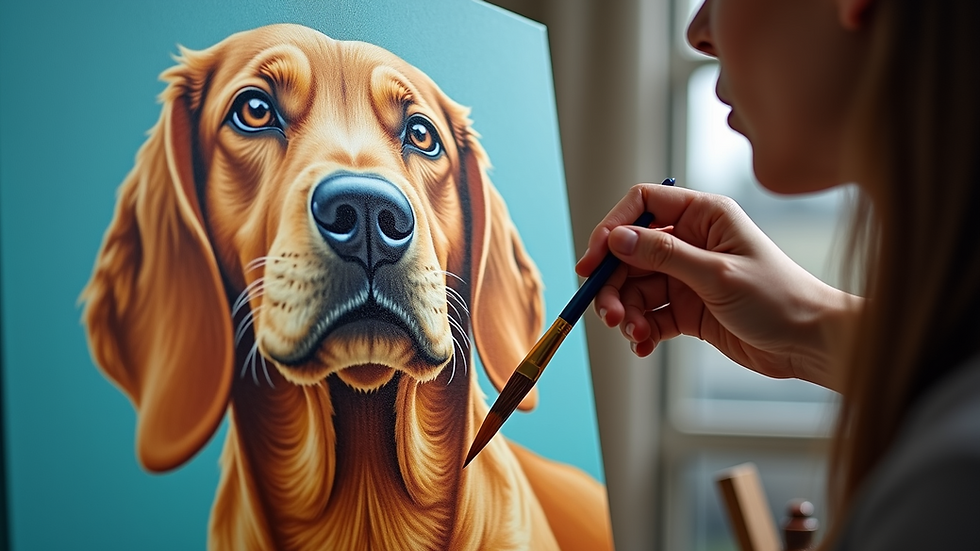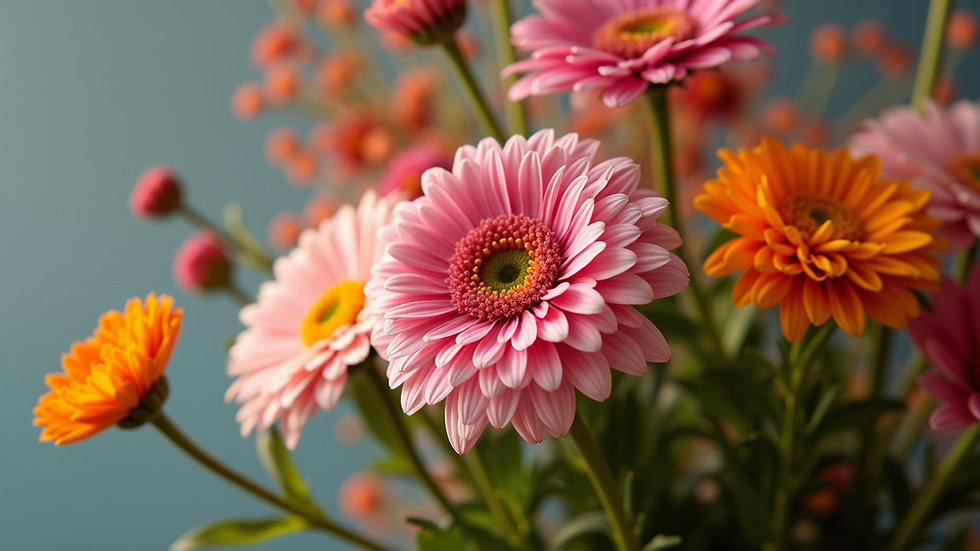Capturing Canine Charm: Dog Oil Painting Essentials
- viktoriyabanul
- Aug 19
- 4 min read
Creating a beautiful oil painting of your beloved dog can be a rewarding experience. Not only does it allow you to express your love for your furry friend, but it also gives you a chance to explore your artistic side. In this post, we will cover the essentials of dog oil painting, from choosing the right materials to techniques that will help you capture the unique charm of your canine companion.
Understanding Oil Painting Basics
Before diving into the specifics of painting dogs, it is important to understand the basics of oil painting. Oil paints are made from pigments suspended in oil, which gives them a rich texture and vibrant colors. They dry slowly, allowing artists to blend colors and make adjustments over time.
Choosing Your Materials
To get started, you will need a few essential materials:
Oil Paints: Look for high-quality paints. Brands like Winsor & Newton or Gamblin are popular among artists.
Brushes: A variety of brushes will help you achieve different effects. Flat brushes are great for broad strokes, while round brushes are perfect for details.
Canvas: Choose a canvas that suits your style. Stretched canvases are ready to use, while canvas boards are more portable.
Palette: A wooden or glass palette will help you mix your colors.
Mediums: Linseed oil or turpentine can be used to thin your paint and alter its drying time.
Preparing Your Workspace
Creating a comfortable and organized workspace is crucial for any artist. Here are some tips to set up your painting area:
Lighting: Natural light is ideal, but if that is not possible, invest in good quality lamps that mimic daylight.
Easels: An adjustable easel can help you find the perfect angle for your painting.
Protective Gear: Wear an apron to protect your clothes and consider gloves if you are sensitive to paint.
Selecting a Reference Photo
A great painting starts with a great reference photo. When choosing a photo of your dog, consider the following:
Lighting: Look for a photo taken in natural light. This will help you see the true colors and shadows of your dog.
Expression: Capture your dog’s personality. A playful pose or a serene moment can add charm to your painting.
Background: A simple background will keep the focus on your dog. Avoid busy or distracting elements.
Sketching Your Dog
Once you have your reference photo, it is time to sketch your dog on the canvas. Here are some tips for a successful sketch:
Proportions: Use light pencil strokes to outline the basic shapes. Pay attention to the proportions of the head, body, and legs.
Details: Focus on key features like the eyes, ears, and nose. These details will bring your dog to life.
Adjustments: Don’t be afraid to make changes. If something looks off, erase and redraw until you are satisfied.
Painting Techniques for Dogs
Now comes the fun part: painting! Here are some techniques to help you capture your dog’s charm:
Layering Colors
Start with a base layer of color. Use a large brush to cover the main areas of your dog’s fur. Once that layer is dry, you can add more colors to create depth and texture.
Blending
Oil paints are great for blending. Use a clean brush to gently mix colors on the canvas. This technique is especially useful for creating smooth transitions in your dog’s fur.
Detailing
Once the base layers are dry, switch to smaller brushes for detailing. Focus on the eyes, nose, and any unique markings your dog has. These details will make your painting stand out.
Adding Background Elements
While the focus should be on your dog, a simple background can enhance your painting. Consider adding:
Nature Elements: A grassy field or a few flowers can create a serene setting.
Abstract Backgrounds: Soft colors or shapes can add interest without distracting from your dog.
Finishing Touches
After you have completed your painting, take a step back and evaluate your work. Here are some final tips:
Varnishing: Once your painting is completely dry, consider applying a varnish to protect it and enhance the colors.
Framing: A good frame can elevate your artwork. Choose a frame that complements your painting style.
Display: Find a special place in your home to showcase your masterpiece.
Common Challenges and Solutions
Every artist faces challenges. Here are some common issues and how to overcome them:
Color Mixing: If your colors are not blending well, try using a medium to help with consistency.
Brush Strokes: If your brush strokes are too visible, use a softer brush to blend them out.
Lack of Detail: If your painting looks flat, add more layers and details to create depth.
Finding Inspiration
Sometimes, inspiration can be hard to find. Here are some ways to spark your creativity:
Visit Art Galleries: Look at other artists’ work for ideas and techniques.
Join Art Communities: Online forums or local art groups can provide support and inspiration.
Take Breaks: Sometimes stepping away from your work can help you see it with fresh eyes.
Sharing Your Artwork
Once you have completed your painting, consider sharing it with others. Here are some ideas:
Social Media: Post your artwork on platforms like Instagram or Facebook to connect with fellow dog lovers and artists.
Art Shows: Look for local art shows or exhibitions where you can display your work.
Gifts: Consider giving your painting as a gift to friends or family who love dogs.
Embracing the Journey
Creating a dog oil painting is not just about the final product. It is about the journey of expressing your love for your pet. Each brushstroke tells a story, and every painting is a unique reflection of your bond with your dog.
Whether you are a seasoned artist or a beginner, remember to enjoy the process. Celebrate your progress and learn from each experience. Your dog’s charm will shine through in your artwork, making it a cherished piece for years to come.

As you embark on your dog oil painting journey, keep these essentials in mind. With the right materials, techniques, and a little bit of patience, you can create a stunning piece of art that captures the essence of your canine companion. Happy painting!


Comments